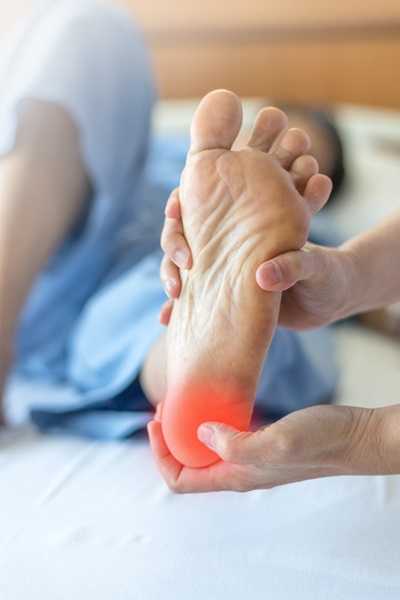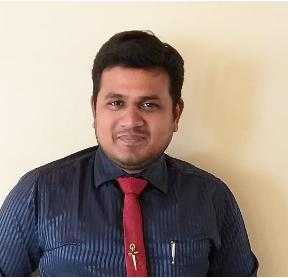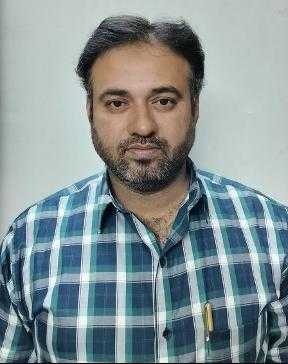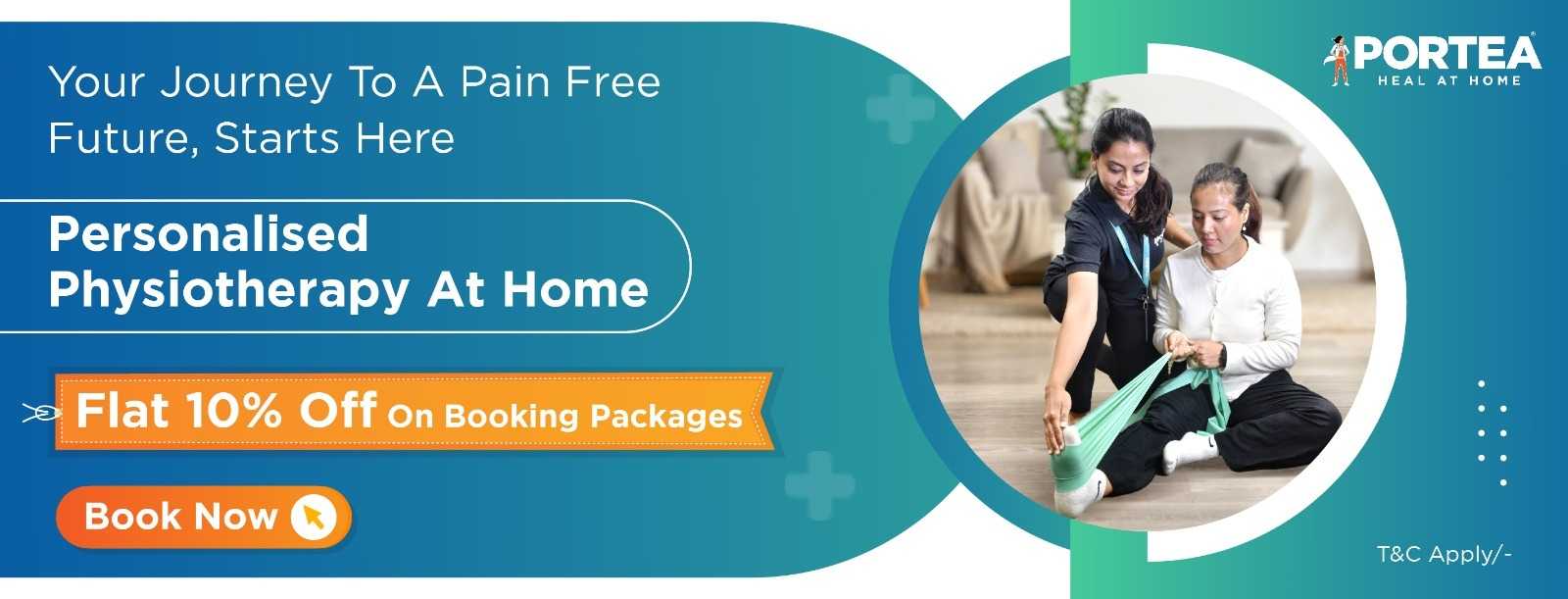
Expert Physiotherapy at Home
Certified physiotherapists visit you at home to provide focused, one-on-one care tailored to your needs. With no travel or waiting rooms, recovery happens in a setting that is comfortable, familiar, and built around your convenience.
Personalised Recovery Programmes
Every treatment plan is designed to suit your condition, goals, and pace. Our physiotherapists follow structured, evolving protocols to ensure consistent progress, with each session aligned to deliver meaningful results.
Trusted Physiotherapists. Real Results.
Our team comprises experienced, background-verified physiotherapists trusted by thousands of families. With a strong focus on safety, reliability, and clinical outcomes, we make recovery at home both effective and reassuring
Patient Testimonials
Portea Physiotherapists for Home Visits
Meet some of our experienced and dedicated healthcare professionals

Dr. Lokesh G
Physiotherapist
Specializations
Experienced in Neurological rehabilitation, Orthopaedic physiotherapy, and Paediatric care
Delivers structured, high-impact treatment plans across neuro, ortho, and paediatrics—ensuring safety, comfort, and measurable recovery at every stage.

Dr. Mohammed Sarwar
Physiotherapist
Specializations
Experienced in Neurological rehabilitation, Adult physiotherapy, and Paediatric care
Combines deep clinical expertise with a compassionate approach, supporting both adults and children through neuro and physical rehabilitation that promotes long-term independence and recovery.

Dr. Nelapati Divya
Physiotherapist
Specializations
Skilled in Orthopaedic rehabilitation, Manual therapy techniques, and Paediatric physiotherapy
Brings a personalised, hands-on approach to healing—combining structural expertise with paediatric sensitivity to restore movement, relieve pain, and improve everyday function.

Dr. Naveen V
Physiotherapist
Specializations
Trained in Pain management, Cardiac and Orthopaedic rehabilitation, Neurological care, and Neural tissue mobilisation
Brings clinical precision and empathy together—designing science-backed recovery protocols for pain relief, nerve mobilisation, and cardio-neuro-ortho rehabilitation across all age groups

Dr. Miloni Savla
Physiotherapist
Specializations
Holds an MPT in Orthopaedics with a focus on Musculoskeletal rehabilitation and strength recovery
Delivers focused, movement-oriented therapy grounded in orthopaedic science—helping patients rebuild strength, restore function, and return to daily life with confidence
Other Cities
Physiotherapy Treatments

introduction
A calcaneal spur, commonly known as a heel spur, is a bony outgrowth that forms on the calcaneus (the heel bone). It is often associated with plantar fasciitis, a condition characterized by inflammation of the plantar fascia, the tissue connecting the heel to the toes.
location in the body
The calcaneal spur is located on the underside of the heel bone, where it can protrude toward the arch of the foot. This location is critical, as it can directly impact mobility and cause significant discomfort.
severity of the condition
The severity of a calcaneal spur can vary widely. Some individuals may experience mild discomfort, while others may have severe pain that limits daily activities. The presence of a spur does not always correlate with the severity of symptoms; some people may have a spur without experiencing pain.
signs and symptoms
Calcaneal spurs often manifest with sharp pain in the heel, particularly during the first steps in the morning or after prolonged sitting. Additional symptoms include tenderness at the bottom of the heel, swelling, and inflammation in the heel area. Pain typically worsens with activity or prolonged standing.
causes
Calcaneal spurs develop due to repetitive stress on the heel, resulting from factors such as:
- Overuse or high-impact activities like running or dancing
- Poor foot mechanics, including flat feet or high arches
- Aging and wear-and-tear on foot structures
- Obesity, which adds extra pressure on the feet
risks involved
Middle-aged individuals are more susceptible to calcaneal spurs. Other risk factors include:
- Occupations requiring prolonged standing or walking
- Poor footwear lacking proper support
- Pre-existing conditions, such as plantar fasciitis or arthritis
prevention
To reduce the risk of developing calcaneal spurs, consider:
- Wearing well-fitting shoes with arch support and cushioning
- Maintaining a healthy weight to minimize pressure on the feet
- Incorporating regular stretching and strengthening exercises for the foot and calf muscles
- Gradually increasing intensity in physical activities to avoid overuse injuries
diagnosis
Diagnosis involves:
- A physical examination to assess pain and tenderness
- Imaging studies, such as X-rays, to visualize the spur and rule out other conditions
treatment methods
Treatment typically includes:
- Rest and activity modification to alleviate stress on the heel
- Ice therapy to reduce inflammation
- Non-steroidal anti-inflammatory drugs (NSAIDs) for pain relief
- Corticosteroid injections in severe cases
physiotherapy treatment
Physiotherapy plays a significant role in managing calcaneal spurs, incorporating:
- Stretching exercises to improve flexibility in the calf muscles and plantar fascia
- Strengthening exercises for the foot and ankle to enhance support
- Manual therapy techniques to relieve pain and improve function
- Ultrasound or laser therapy to promote healing
how portea helps
At Portea, we offer Physiotherapy at Home services to address a variety of health conditions. Our physiotherapy programs are tailored to support recovery from sports injuries and post-surgical rehabilitation, while also providing effective management for back pain, arthritis, shoulder pain, and slipped disc issues. For those with respiratory disorders like COPD, we focus on targeted breathing exercises that enhance lung function. Additionally, our physiotherapists are experienced in neuro-rehabilitation for individuals recovering from stroke or managing paralysis, with specialized exercises designed to improve strength, balance, and mobility. With Portea, you can access professional, personalized physiotherapy in the comfort of your home, designed to enhance your quality of life.
Portea provides a range of services to support your health, including nursing care at home, nursing attendants at home, and options to rent or purchase medical equipment at home. We also offer home vaccinations, personalized diabetes care plans, mothers and baby care plans at home. Our goal is to deliver compassionate, tailored care right where you need it.
faq’s
Can calcaneal spurs be prevented?
Preventive measures include wearing supportive footwear, maintaining a healthy weight, stretching before physical activity, and avoiding excessive strain on the heels.
How long does recovery from a calcaneal spur take?
Recovery time varies depending on the severity of symptoms and the treatment approach, but many people experience relief within a few weeks to months.
Is surgery always required for a calcaneal spur?
No, surgery is usually considered a last resort if conservative treatments fail to relieve pain and improve function after an extended period.
Can calcaneal spurs lead to other conditions?
Yes, calcaneal spurs can be associated with plantar fasciitis and may contribute to chronic heel pain if not properly addressed.
When should I see a doctor about a calcaneal spur?
Consult a doctor if you experience persistent heel pain, difficulty walking, or if home remedies do not alleviate symptoms after a few weeks.
References
- American Academy of Orthopaedic Surgeons (AAOS) – Provides guidelines on foot and ankle conditions.
- National Institutes of Health (NIH) – Contains research and studies on the causes and treatment of foot conditions.
- British Journal of Sports Medicine – Features articles on physiotherapy approaches for heel pain and calcaneal spurs.
Understanding calcaneal spurs is crucial for effective management and prevention strategies. If you experience persistent heel pain, consult a healthcare professional for a proper diagnosis and tailored treatment plan.
Physiotherapy for a calcaneal spur focuses on alleviating pain and promoting flexibility. Stretching exercises like calf stretches and plantar fascia stretches (using a towel or rolling a ball under the foot) help reduce heel tension. Basic toe raises and towel scrunches strengthen the foot muscles, improving support around the heel.
Doctor Consultation
Nursing
Physiotherapy
Trained Attendant
Elder Care
Mother & Baby Care
Lab Tests
Medical Equipment
Speciality Pharma
Critical Care




